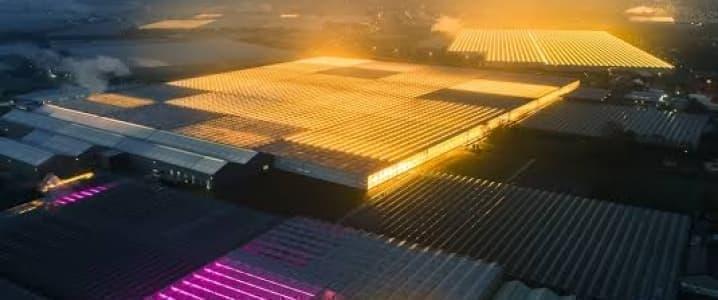The Cannabis Industry’s Dirty Energy Secret
Authored by James Burgess via OilPrice.com,
Your average marijuana plant is a rather unimposing, forest green weed that blends well with nature. The dirty truth, however, is that the business of growing cannabis is anything but green. In fact, the growing of pot is so power-intensive that its ecological footprint is quickly becoming an environmental nightmare.
The $344 billion cannabis industry is one of the country’s most energy-intensive in the world, frequently demanding an array of heating, ventilation and air-conditioning (HVAC) systems, fans and 24-hour indoor lighting rigs at multiple growing sites.
Just how much electricity does the entire US marijuana industry consume?
The numbers are mind-boggling.
They’re also the bane of the cannabis industry, according to Joseph Maskell, founder and president of AAXLL, one cannabis company aiming to be a major disrupter of the short-lived status quo.
“The key in this emerging industry is to be asset-light,” says Maskell.
“With billions spent just on electricity in the US cannabis-growing industry, the companies that will survive the next culling, which is already in process, will be those with low capital outlays, no warehouses, no buildings, no machinery.”
Back in 2016, after the state of Oregon legalized recreational marijuana, Pacific Power in Portland recorded seven blackouts that the company traced to marijuana production.
Meanwhile, a good 45% of Denver’s increase in energy demand or “load growth” was directly linked to electricity that went to power marijuana growth.
In other words, investors are going to have to unplug unless they want to see their profits go up in smoke.
Appetite for Energy
The electricity consumption of marijuana grow houses is staggering when you compare it to consumption by the average business or residential unit.
In 2014, the NPCC worked out that it takes 4,000 to 6,000 kilowatt-hours (kWh) of energy to produce a single kilogram of marijuana product. Electricity costs can represent 20% of the total cost of cannabis production.
Back in 2015, it was estimated that a 5,000-square-foot indoor facility in Boulder County consumed ~41,808 kilowatt-hours per month–or nearly 66x the average consumption by a household in the county. More than two percent of the city’s electricity usage went to marijuana production.
More recent estimates are not very encouraging either, even as more energy professionals enter the marketplace.
Evan Mills, a scientist at the Lawrence Berkeley National Laboratory, says that production of legal marijuana in the US consumes 1% of total electricity, or 41.71 billion kilowatt-hours (kWh) of electricity, at a cost of $6 billion per year.
That’s enough energy to power 3.8 million homes or the entire State of Georgia. Generating that much electricity spews out 15m tons of greenhouse gas emissions (CO2), or about what three million average cars would produce in a year.
The actual figures could be much higher, says AAXLL’s Maskell.
A 2017 study by New Frontier Data revealed that only 25% of marijuana is produced legally, which is hardly surprising considering that recreational weed is legal in only 11 states and Washington DC. In effect, this means that growing marijuana could be consuming as much as 3-4% of the country’s electricity.
Obviously, such insane levels of electricity consumption is putting a major strain on public utilities as evidenced by the Pacific Power blackouts. As Steven Corson, a Portland General Electric (PGE) spokesman, has lamented: “We don’t track the numbers specifically related to cannabis producers, but some have created dangerous situations by overloading existing equipment.”
Lack of Standards
The huge energy appetite by the cannabis industry can be pinned on how grow houses operate.
Ron Flax, the chief building official in Boulder County, says the basic issue is the lighting intensity inside the grow facilities which is much higher than for any other plant. For instance, Solstice, a Washington based marijuana producer, uses 1,000W high intensity discharge lamps (HID), for the vegetative phase of growth.
Colorado, one of the leading cannabis states where most of the electricity is coal-powered, has devised schemes to discourage excessive power use by growers. The state requires commercial growers to either pay a 2c charge per kW or offset their electricity use with renewable energy (average electricity rate in Denver is 11.05 cents per kWh).
The accrued funds go to the Energy Impact Offset Fund where they are used to finance sustainable cannabis cultivation and also educate growers. Meanwhile, Seattle City Light is incentivizing growers to shift to more efficient lighting technologies. The public utility has promised six-figure rebates to growers who switch to LED lights instead of power-guzzling HIDs.
The big problem here is that the marijuana industry is still infantile and lacks clear standards. Even in states where weed is legal, production still tends to be done in underground operations with everyone doing what works for them.
It’s tough to be profitable right now in an industry that’s so energy-intensive. Cannabis 2.0, says Maskell , will be an entirely different beast. That’s why AAXLL isn’t focused on capital burying marijuana growing; rather, it’s focused on a revenue-generating end product that spends on marketing brilliance, like their Balance CBD line, not machinery.
Eventually, the market might dictate that growers use cheaper greenhouses and take production outdoors where costs are bound to be much lower. In the meantime, it’s going to be a steep learning curve for the burgeoning industry.
Tyler Durden
Wed, 01/15/2020 – 20:25
via ZeroHedge News https://ift.tt/2RjBRFo Tyler Durden
